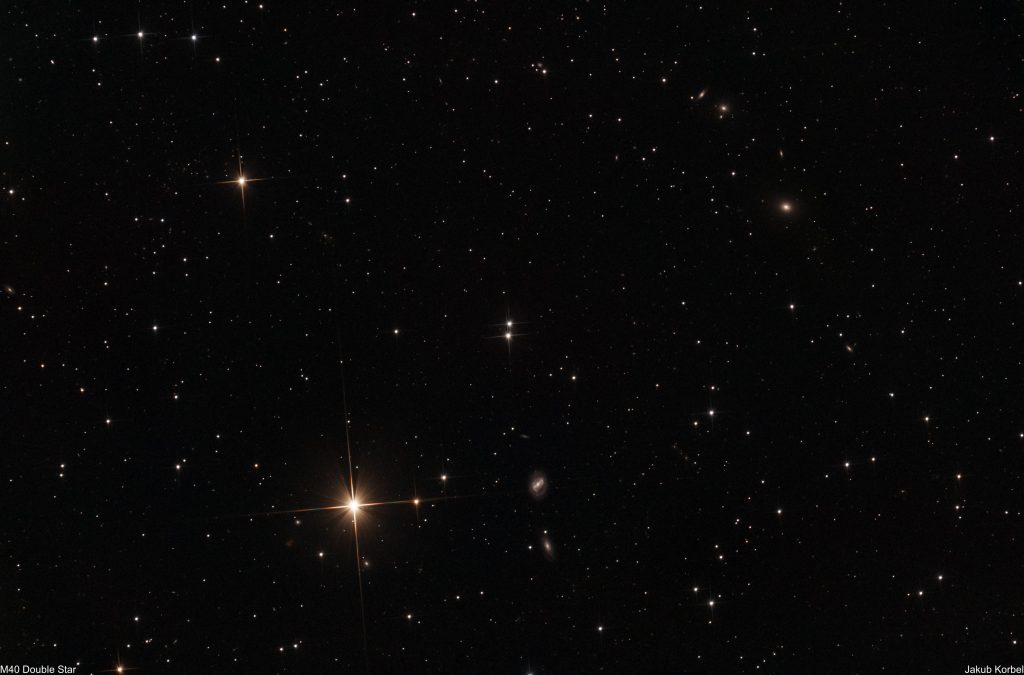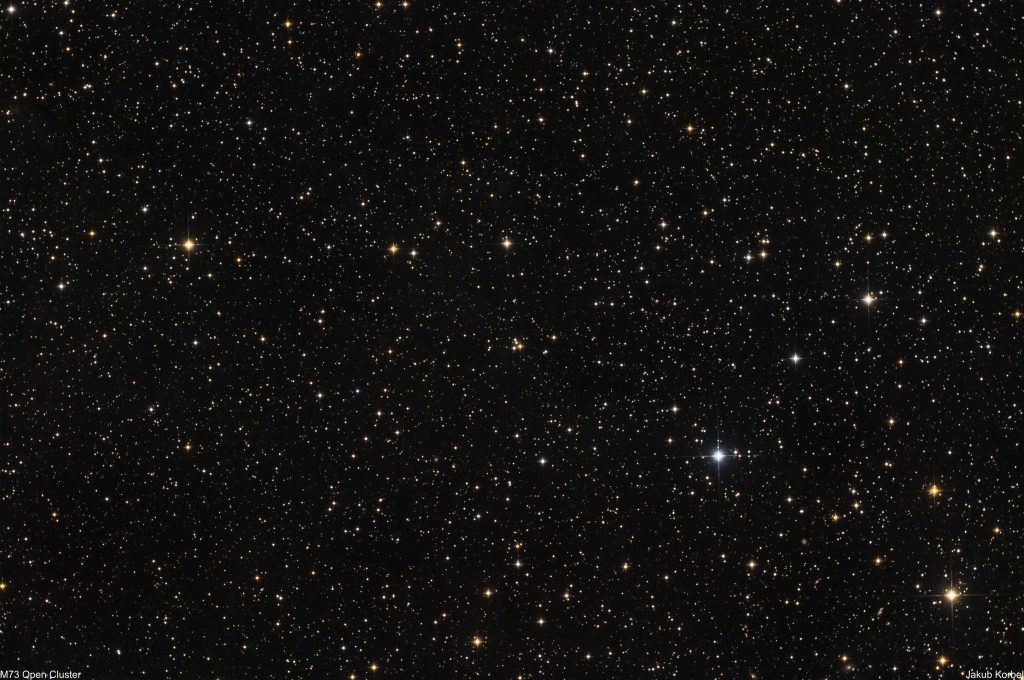I went to Crete without a detailed plan on which deep space objects to capture. The primary target was Rho Ophiuchi, which I captured really well. Then I started to think about the next objects. Obviously, if you are in a dark place, you can point your camera nearly anywhere. However, there are some regions full of stars and deep space objects. For example constellation Cygnus, which is sometimes called the Northern Cross. It is located visually on the plane of the Milky Way galactic disk, therefore there are many deep space objects.
Let’s have a look at a wide-field picture captured by a 24 mm lens attached to Canon EOS 6Da:
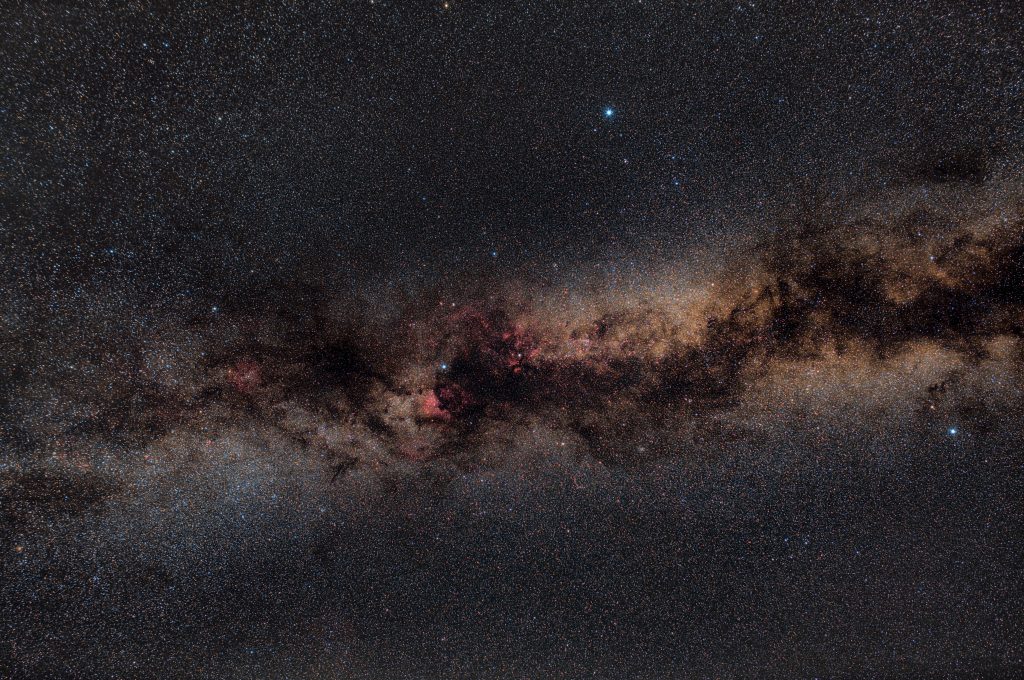
Let’s zoom a bit by changing the lens to a 50 mm focal length. Here the constellation is perfectly centered:
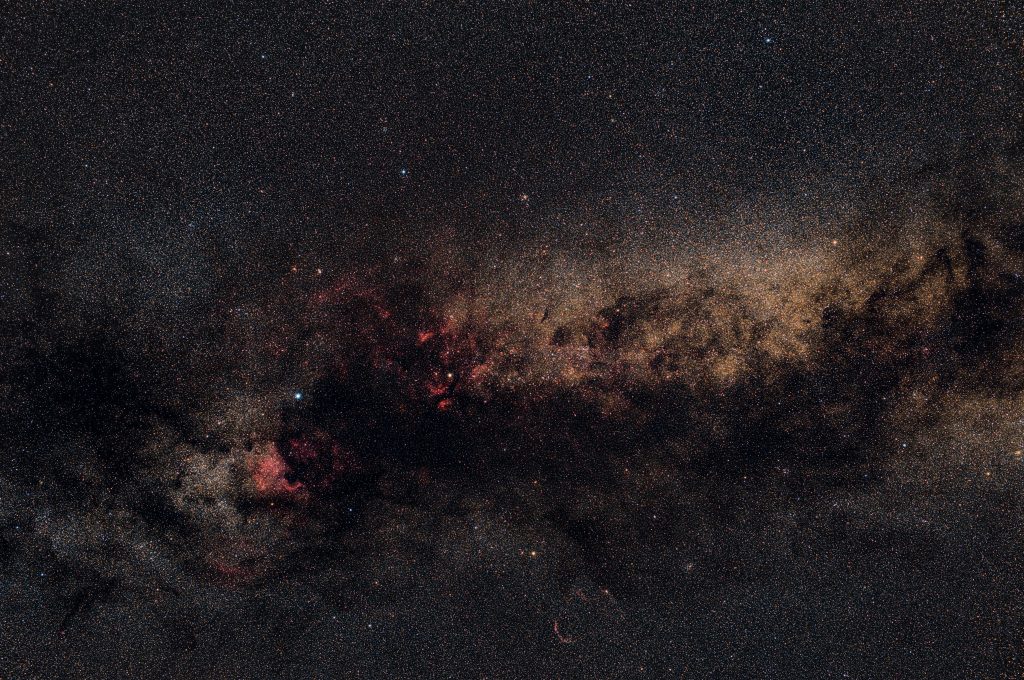
Let’s zoom further to the central star Sadr by change of the lens to 180 mm focal length:
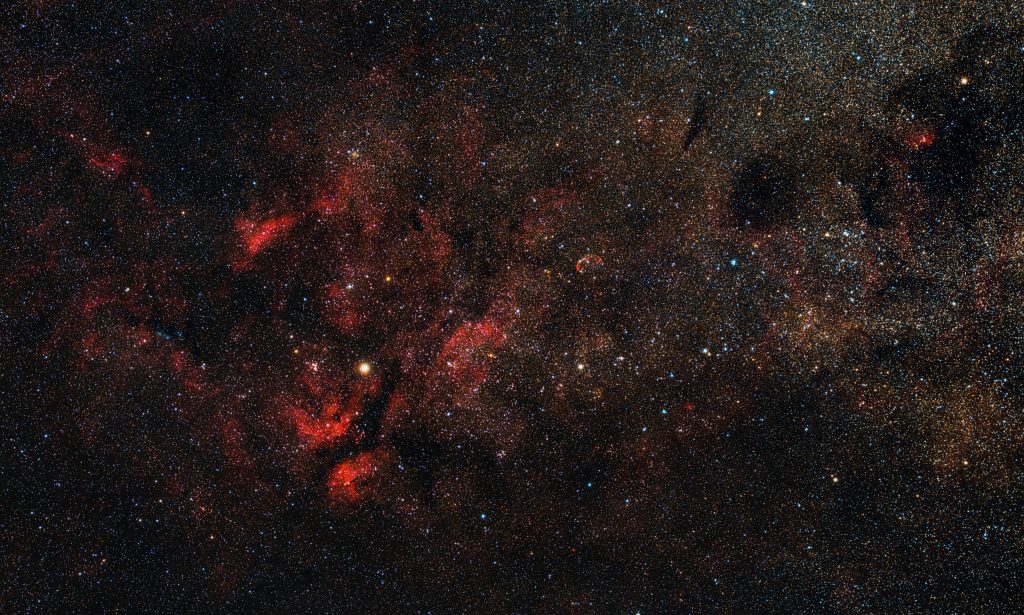
Let’s keep the focal length 180 mm and let’s have a look at the left star Deneb and very famous North America nebula:
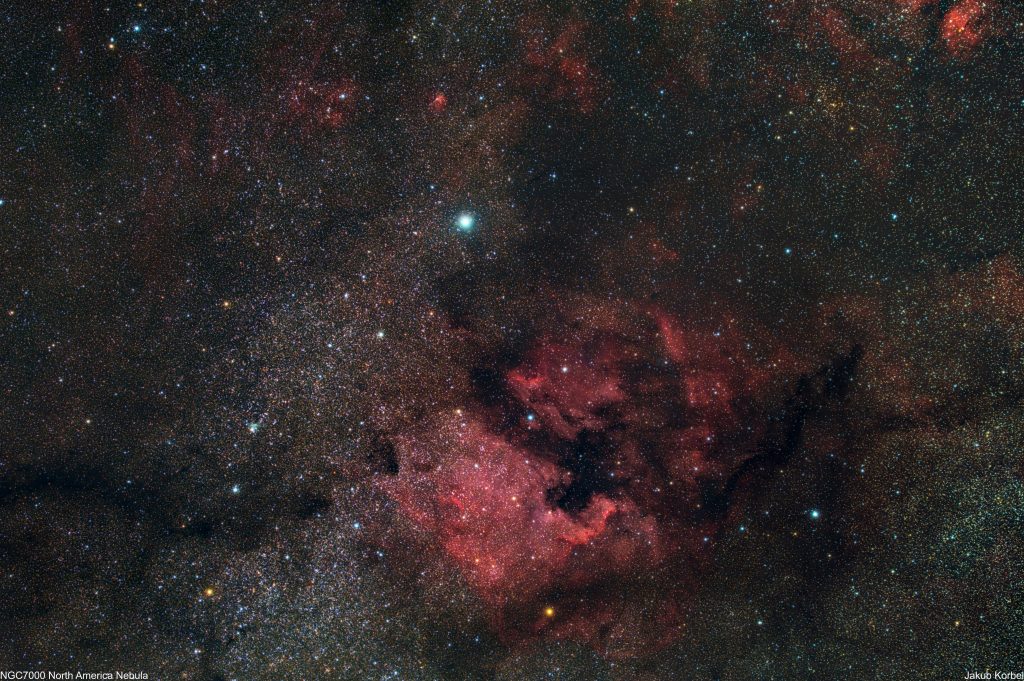
Again, let’s keep the focal length 180 mm and change to perspective to the bottom (eastern) star Aljanah, where the beautiful supernova remnant the Veil nebula is located:
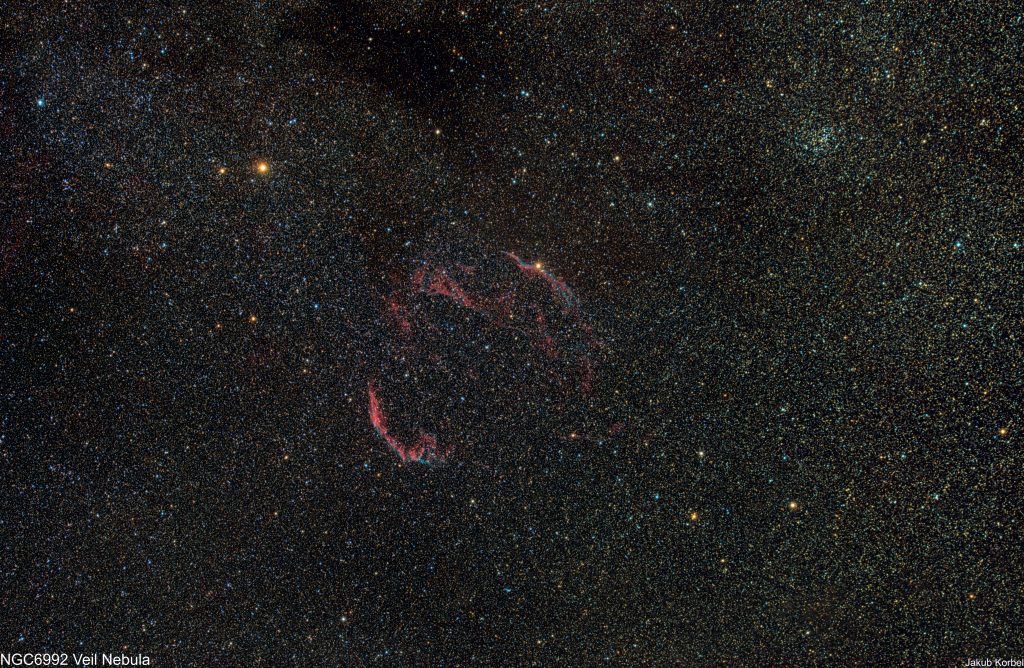
In total, the camera collected 15.5 hours of light and I am happy with the result.

